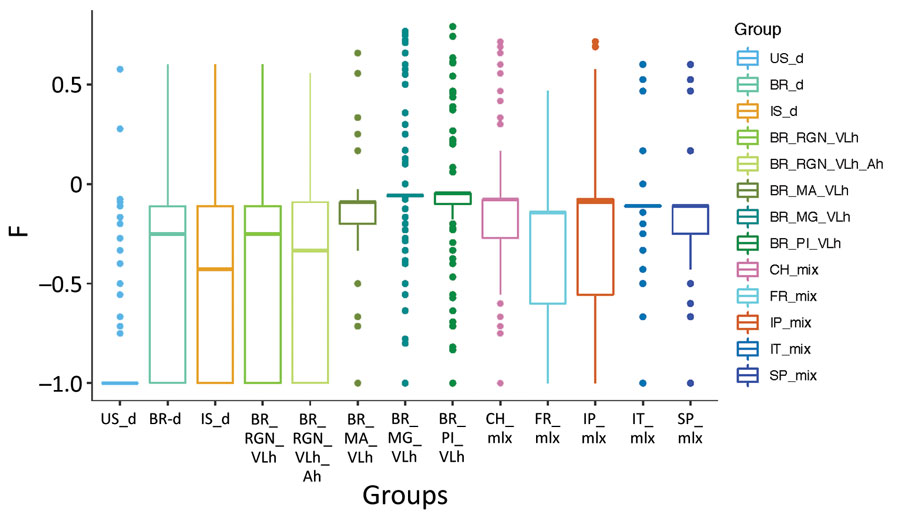Volume 28, Number 6—June 2022
Research
Geographic Origin and Vertical Transmission of Leishmania infantum Parasites in Hunting Hounds, United States
Figure 5

Figure 5. Extreme excess of heterozygous sites in the US hound–derived Leishmania infantum isolates. The group-specific inbreeding coefficient F is shown for all polymorphic sites in the respective parasite population. F measures the deviation of the frequency of heterozygotes from Hardy-Weinberg equilibrium with negative values indicating an excess and positive values a deficiency of heterozygotes over homozygotes. Horizontal lines within boxes indicate medians; box top and bottom lines indicate 25 and 75 percentiles; and error bars indicate minimum and maximum values, excluding outliers.
1These senior authors contributed equally to this article.
Page created: April 12, 2022
Page updated: May 22, 2022
Page reviewed: May 22, 2022
The conclusions, findings, and opinions expressed by authors contributing to this journal do not necessarily reflect the official position of the U.S. Department of Health and Human Services, the Public Health Service, the Centers for Disease Control and Prevention, or the authors' affiliated institutions. Use of trade names is for identification only and does not imply endorsement by any of the groups named above.